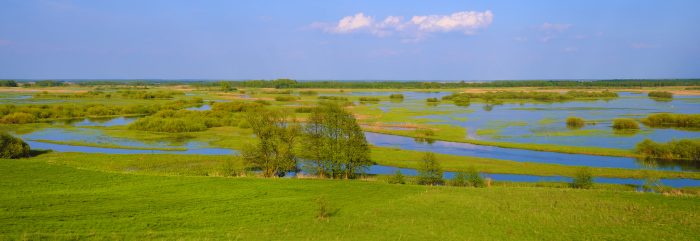EPA’s new “Navigable Waters Protection Rule”
 What are the changes? What should I understand?
What are the changes? What should I understand?
Working together, the Environmental Protection Agency (EPA) and the U.S. Army Corps of Engineers tackled the Executive Order issued in 2017 by President Trump to review and revise the then existing “The Waters of the United States Rule”.
The goals? To protect navigable waters from pollution while also encouraging economic growth; provide clearer definitions of federal and state jurisdiction over waters of the US; give primary power to the states in administering the Clean Water Act; and, promote efficiency and consistency in the permitting process.
After extensive work and public comment, the Final Rule, known as the “Navigable Waters Protection Rule”, was completed in January 2020, and was published in the Federal Register on April 21 will become law after 60 days.
Here, we’ll help you understand the basics of the rule and how it impacts Utah and the rest of the county. We also provide resources if you’d like to learn more.
So, What are the Changes?
The rule provides clarification of federal reach and details what is included and excluded, from federal control as jurisdictional waters, or Waters of the United States (WOTUS). The rule also provides definitions to terms in the regulation that were previously not defined or identified.
What’s In and What’s Out
“The Navigable Waters Protection Rule” identifies four simple categories to define WOTUS, which fall under federal jurisdiction:
1. Traditional Navigable Waters and Territorial Seas
2. Tributaries (perennial and intermittent tributaries of category 1 above)
3. Lakes, Ponds, and Impoundments of Jurisdictional Waters
4. Wetlands Adjacent to Jurisdictional Waters (wetlands adjacent to categories 1-3 above)
The rule also lists specific categories that are excluded as jurisdictional waters, primarily:
- Ephemeral streams and features (only hold water because of rainfall)
- Diffuse stormwater run-off
- Many ditches, including farm and roadside ditches
- Prior converted cropland
- Artificially irrigated areas, as well as artificial lakes and ponds
- Water-filled depressions resulting from mining or construction
- Stormwater control features
- Groundwater and wastewater recycling and/or treatment systems
Important to Note
Ephemeral and intermittent streams make up more than 80% of waterways in the arid West, including Utah. Under the proposed rule, many of these streams once considered jurisdictional will no longer qualify as jurisdictional WOTUS and will not be subject to federal regulations. However, these waterways may still be subject to state regulations such as stream alteration permits.
A variety of site visits, water analyses, mapping, and other research and studies may be required to determine if waters fall within, or without, the parameters of specific definitions within the rule—i.e., determining downstream water surface flow and surface connections in a typical year, perennial or intermittent flows, wetland adjacency, and inundation of areas by flooding.
The Navigable Waters Protection Rule has generated controversy across the country. Many experts anticipate the rule to be challenged in court. This could lead to a suspension of the proposed changes while rulings are decided. CRS will stay abreast of continuing changes to provide our clients with up-to-date information and expert service.
For more information on the “Navigable Waters Protection Rule” (EPA-HQ-OW-2018-0149) contact Doug Jacobson in our Environmental Services Division at (801) 939-5565 or doug.jacobson@crsengineers.com.

Visit www.epa.gov/nwp for additional information.
